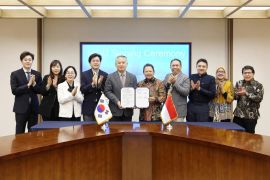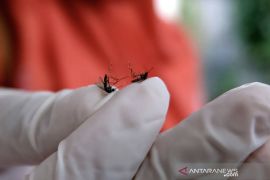“The number almost reached the 98 percent coverage target as mandated by the 2024 RPJMN (National Middle-term Development Plan),” Jaya stated in a working meeting with Commission IX of the House of Representatives (DPR RI) and state health insurer BPJS Kesehatan, broadcast online here on Wednesday (Mar 27).
The director general remarked that out of the 267 million insurance participants, 214 million can be considered as being “active participants” who pay their insurance fees. Meanwhile, another 54 million participants are considered “non-active.”
“Some 99 percent of the 54 million non-active participants, equal to 53.8 million, are PBPU (non-wage earners) participants,” he noted.
Insurance participants are considered non-wage earners if they work in the non-formal sector or micro, small, and medium enterprises, Jaya added.
Meanwhile, President Director of BPJS Kesehatan Ali Ghufron Mukti stated that by February 2024, the number of JKN participants reached 268 million, an increase of one million from the 2023-end figure.
The latest number has shown significant progress from 2014 when the insurer recorded only 133 million insurance participants at that time, he said.
“The RPJMN targeted 98 percent coverage by 2024. However, according to our roadmap, which the government had also signed, we target 113 million insurance premium assistance recipients to be paid by the state budget,” Mukti remarked.
Related news: Indonesia is one step closer to Universal Health Coverage
He expressed confidence that if the insurance premium assistance is implemented thoroughly, the 98 percent coverage target will be achieved in no time.
The president director highlighted that by December 2023, Indonesia’s universal healthcare coverage (UHC) had reached 31 provinces and 419 cities and districts. The coverage increased to 33 provinces and 423 cities and districts by February 29, 2024.
Moreover, Mukti explained that the World Health Organisation (WHO) determined three parameters in UHC achievement, with the first parameter being the percentage of population covered. He said Indonesia has achieved 95 percent coverage in just a decade.
He stated that the second parameter is the completeness of healthcare facilities available for insurance participants.
“Indonesia is an interesting case because services from first-level healthcare facilities to the referral facilities, up until complicated surgeries, are covered (by BPJS), provided that procedures are followed,” the president director stated.
The third parameter is the percentage of premium prices borne by insurance participants – the lower, the better.
“The earlier average was 50 percent, and the current average is 25 percent. I believe we are on the right track, and (BPJS) is our common pride. Hundreds of millions of residents enjoyed the results of our gotong royong (mutual assistance),” Mukti remarked.
Related news: BPJS Kesehatan launches PESIAR to increase health insurance coverage
Translator: Mecca Yumna, Nabil Ihsan
Editor: Yuni Arisandy Sinaga
Copyright © ANTARA 2024












